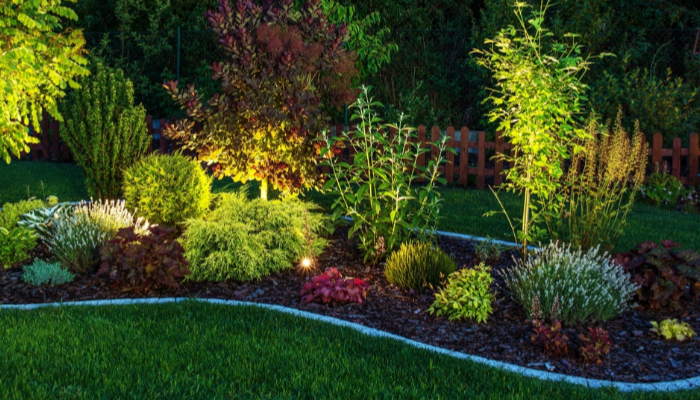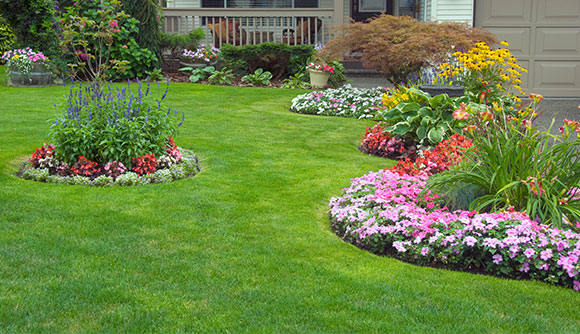Little Known Facts About Landscape Design.
Not known Factual Statements About Landscape Design
Table of ContentsThe Greatest Guide To Landscape DesignThe Main Principles Of Landscape Design The Facts About Landscape Design Revealed4 Easy Facts About Landscape Design ExplainedFascination About Landscape Design
When making a household landscape, one of the most crucial action is to put a plan on paper. Developing a master strategy will save you money and time and is more most likely to cause an effective style. A plan of attack is established via the 'style process': a step-by-step method that thinks about the ecological conditions, your desires, and the components and principles of layout.The practical layout is then used to locate the task rooms on the site and from this representation a conceptual strategy is developed. The last action is a final design that consists of all the hardscape and planting information that are needed for installation. Landscape Design. Throughout the style process there are 10 important points to take into consideration: for plant option and activity location by considering what you desire and need to assist figure out forms and organize rooms by assigning task locations and linking with components for both the environment and the individual by utilizing massing and layering strategies such as transition areas and centerpieces in the materials, the colors, and the surface textures for the growth and upkeep of plants by utilizing lasting layout techniques A thorough inventory and analysis of the site is crucial to identify the ecological problems for plant development and the best use of the site
The sort of soil identifies the nutrients and dampness readily available to the plants. It is constantly best to utilize plants that will flourish in the existing soil. Although dirt can be modified, amendment is typically pricey and most times inefficient. Existing greenery can supply hints to the soil type. Where plants grow well, keep in mind the dirt conditions and use plants with similar growing demands.
Everything about Landscape Design
Topography and drain ought to additionally be noted and all drain troubles corrected in the proposed design. A good layout will certainly move water away from your home and re-route it to various other areas of the lawn. Environment problems begin with temperature: plants must be able to survive the typical high and, most significantly, the average low temperature levels for the region.
Utilities such as power lines, septic containers, underground energies and roofing overhangs establish plant place. Use a land surveyor's plat of your property for the boundaries and area of your home.

About Landscape Design
Budget plan concerns consist of the materials, first installment costs and the on-going upkeep prices. Establish the moment and money you are prepared to place right into keeping the plants and hardscape-be reasonable about your purposes and capability. Figure 3. Existing usage locations. Credit Report: Gail Hansen, UF/IFAS Number 4. Recommended use locations. Credit Score: Gail Hansen, UF/IFAS There are several landscape style themes- from simple to complicated, but it is useful to pick one to guide your plant and material selection.
Several people locate it handy to search in horticulture magazines and books for ideas. This is an excellent start, however know that the gardens in the pictures were chosen due to the fact that they are outstanding instances. Look at the pictures with a image source critical eye to gather concepts that you can adapt to your passion degree, your spending plan and your site.
Determine if you intend to open your yard, close your lawn, or a little of both, to these views. Simply put, do you desire the yard to confine the space around you and associate mostly to your house, or do you desire the yard to open views and look external, associating to the environments? This will certainly provide you a beginning factor to assume regarding a motif.
Landscape Design Fundamentals Explained

In a kind motif the organization and form of the rooms in the backyard is based either on the shape of the home, the shape of the areas between your house and the residential property boundaries, or a preferred shape of the home owner. The type motif determines the form and organization (the design) of the spaces and the web links between them.
Design is generally the main resource of a style, however motifs can likewise represent a time, a society, a location, or a sensation, such as calmness or calmness. The advantage to utilizing a traditional design theme is the established set of types and elements have actually historically worked well together and withstood the examination of time.
Indicators on Landscape Design You Need To Know
The outdoors wall surface of your home typically works as the first wall or beginning factor of an outside room. Inappropriate uses should be divided, and relevant tasks, such as food preparation and dining, need to be put together click to find out more to make the yard more efficient and delightful - Landscape Design. When utilizing hardscape to produce spaces, use building and construction product similar to that used in the house for continuity from your home right into the yard
This gives a feeling of mystery that advertises exploration and exploration of the landscape. From a layout perspective, plant products have three significant features in the landscape: aesthetic, structural and practical.